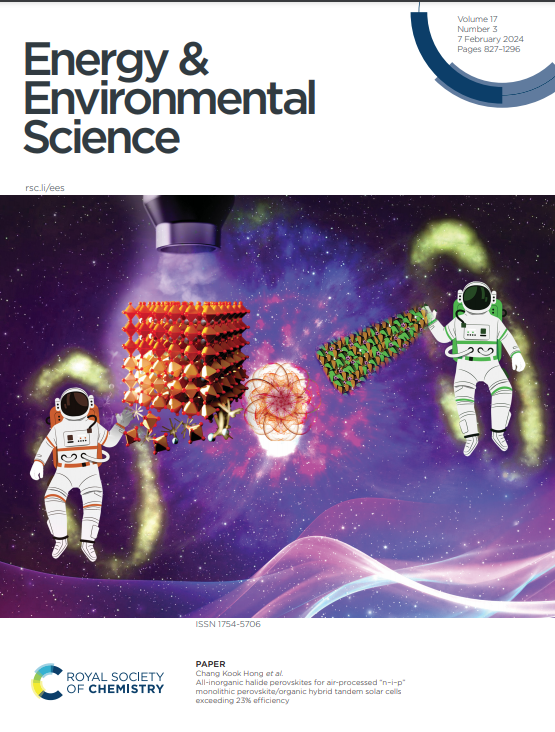Synthesis of stretchable triboelectric material with strain-compensating ability using gradient interpenetrating polymer networks
IF 32.4
1区 材料科学
Q1 CHEMISTRY, MULTIDISCIPLINARY
引用次数: 0
Abstract
Unlike conventional rigid triboelectric nanogenerators (TENGs), elastic TENGs are considered attractive for energy harvesting and sensing applications in mechanically harsh conditions. However, the practicality of elastic TENGs has been limited by the lack of elastic materials that simultaneously possess the desired mechanical and triboelectric properties. This paper introduces a complementary material synthesis strategy that uses a gradient interpenetrating polymer network (g-IPN) to address this issue. A sub-micron thick g-IPN was formed on a host elastomer (Ecoflex-CNT) that has high contact conformity using a highly chargeable guest polymer (pVP) with a low work function, through initiated chemical vapor deposition (iCVD) process. This complementary material synthesis effectively leveraged only the strengths of each component and resulted in a synergistic enhancement in output performance, with a short-circuit charge density (QSC) and an open-circuit voltage (VOC) up to 445 μC m-2 and 1335 V, respectively. These values were achieved without affecting bulk mechanical properties of the host elastomer, such as high stretchability and low bulk elastic modulus. Moreover, the depth-directional gradient profile of the g-IPN effectively prevented degradation in output performance under a severely stretched state (up to 100% strain), through a so-called strain-compensating ability. The effectiveness of the g-IPN in three-dimensional (3D)-structured elastic TENGs was successfully demonstrated by applying the g-IPN to a sponge-structured 3D elastic TENG (3D-IPN-TENG), which benefited from the exceptional deposition conformity of the iCVD process. The fabricated 3D-IPN-TENG showed stable operation with a short-circuit volume charge density (QSC,vol) of up to 267.2 mC m-3, which is a record-high value among 3D-structured TENGs that utilize contact electrification (CE) between solids. This work not only overcomes the limitations of existing material strategies for elastic TENGs, but also suggests a new universal material design principle for synthesizing high-performance triboelectric materials.求助全文
约1分钟内获得全文
求助全文
来源期刊

Energy & Environmental Science
化学-工程:化工
CiteScore
50.50
自引率
2.20%
发文量
349
审稿时长
2.2 months
期刊介绍:
Energy & Environmental Science, a peer-reviewed scientific journal, publishes original research and review articles covering interdisciplinary topics in the (bio)chemical and (bio)physical sciences, as well as chemical engineering disciplines. Published monthly by the Royal Society of Chemistry (RSC), a not-for-profit publisher, Energy & Environmental Science is recognized as a leading journal. It boasts an impressive impact factor of 8.500 as of 2009, ranking 8th among 140 journals in the category "Chemistry, Multidisciplinary," second among 71 journals in "Energy & Fuels," second among 128 journals in "Engineering, Chemical," and first among 181 scientific journals in "Environmental Sciences."
Energy & Environmental Science publishes various types of articles, including Research Papers (original scientific work), Review Articles, Perspectives, and Minireviews (feature review-type articles of broad interest), Communications (original scientific work of an urgent nature), Opinions (personal, often speculative viewpoints or hypotheses on current topics), and Analysis Articles (in-depth examination of energy-related issues).
 求助内容:
求助内容: 应助结果提醒方式:
应助结果提醒方式:


